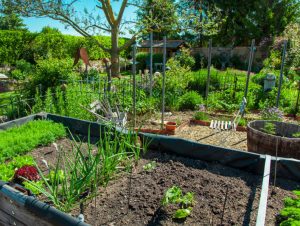The landscaping industry has witnessed a transformative shift towards sustainability and eco-friendly practices in recent years. One emerging trend that holds immense promise is the integration of edible landscapes in commercial spaces. This innovative approach enhances the aesthetic appeal of the surroundings and promotes sustainable agriculture within urban environments. In this blog post, we will delve into the concept of edible landscapes, explore compelling examples within the landscaping industry, and highlight the myriad benefits of embracing this eco-conscious trend.

The Concept of Edible Landscapes:
Edible landscapes involve intentionally incorporating edible plants, herbs, and even fruit-bearing trees into the design of outdoor spaces. While traditional landscaping focuses primarily on ornamental plants, edible landscapes blur the lines between functionality and aesthetics. Imagine a corporate campus adorned with visually stunning greenery, fruit trees, herb gardens, and vegetable patches. This integration provides a feast for the eyes and yields tangible, edible benefits.

Examples within the Landscaping Industry:
- Corporate Courtyards with a Purpose:
Many forward-thinking companies are transforming their outdoor spaces into productive, edible landscapes. Courtyards are adorned with raised beds filled with vegetables and herbs, providing employees with a serene environment for relaxation and an opportunity to connect with nature. Companies like Google and Apple have embraced this trend, creating sustainable and productive spaces that contribute to employee well-being.
2. Restaurant Gardens:
In the hospitality sector, restaurants directly incorporate edible landscapes into their designs. Instead of relying solely on external suppliers, some eateries are growing their fresh produce on-site. This ensures a regular supply of high-quality ingredients and serves as a unique selling point for environmentally conscious consumers.
3. Retail Spaces with Green Roofs:
Retail spaces are taking sustainability to new heights. Green roofs adorned with edible plants, such as strawberries, herbs, and edible flowers, are becoming common. These spaces contribute to reducing the urban heat island effect and offer a sustainable source of produce for businesses and their communities.

Benefits of Edible Landscapes in Commercial Spaces:
- Environmental Sustainability:
Edible landscapes contribute to environmental sustainability by promoting local food production and reducing the carbon footprint of transporting produce. Using organic farming practices further enhances the ecological benefits of these landscapes.
2. Employee Well-being:
Incorporating edible landscapes in commercial spaces has been shown to enhance employee well-being. Access to green spaces positively impacts mental health, and growing and harvesting food fosters a sense of accomplishment and connection with nature.
3. Cost Savings:
Businesses can experience cost savings by increasing their produce on-site. This reduces expenses related to purchasing from external suppliers and aligns with a broader movement toward self-sufficiency.
4. Community Engagement:
Edible landscapes create opportunities for businesses to engage with their local communities. Hosting events such as farmers’ markets or workshops on sustainable gardening benefits the community and strengthens the business’s ties with its surroundings.

Innovative Approaches:
- Vertical Farming Installations:
In limited-space commercial areas, vertical farming installations provide an innovative solution. These vertical gardens utilize space efficiently, allowing businesses to cultivate crops in a small footprint.
2. Smart Irrigation Systems:
By incorporating technology into edible landscapes, businesses can implement smart irrigation systems. These systems optimize water usage, ensuring that plants receive the right amount of water without wastage.
3. Educational Initiatives:
Businesses can take an educational approach by involving employees and the community in the cultivation process. Workshops, gardening classes, and educational signage can raise awareness about sustainable agriculture and healthy eating habits.
Encouraging a Shift Towards Sustainable Practices:
Integrating edible landscapes in commercial spaces represents a significant step towards sustainable and aesthetically pleasing practices. By embracing this trend, businesses enhance their surroundings and actively contribute to environmental conservation and community well-being. As the landscaping industry evolves, incorporating edible landscapes will likely become a hallmark of forward-thinking and eco-conscious businesses. It’s time for the landscaping industry to embrace the edible landscape revolution and cultivate a greener, more sustainable future.